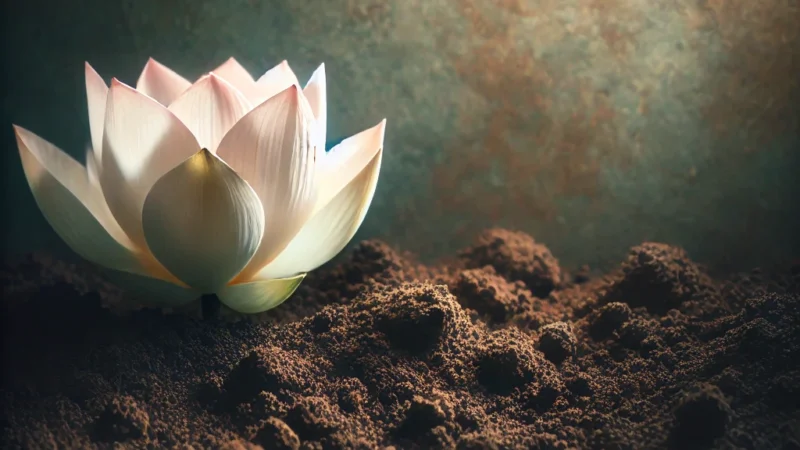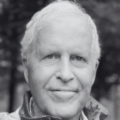

We all have a subtle yet profound pull to live more from our hearts—our center of love, compassion, gratitude, freedom, and silent wisdom—and less from our heads, the primary source of our critical judgments and core limiting beliefs. Yet to live a truly heart-centered life, we must feel safe. As a result, to live from the heart in a deep and steady way, we must take the time to discover our deepest ground. I have been exploring the relationship between the heart and the ground for decades, both as a depth-psychotherapist, now retired, and as a spiritual teacher. I once thought I could write a single book about both, but I found that the richness of each subject deserved books of their own. I’ve devoted chapters to the theme of the ground in my previous books ‘In Touch’ and ‘The Deep Heart’, but here I’ve taken the space to fully unpack this critically important subject.
Why is the ground—the felt-sense of spacious stability in and beneath the body—so important? In my experience, it is where most spiritual explorers, both beginners and veterans, get stuck, often unknowingly. The ground is largely terra incognita, an unknown ter-ritory. There is enormous resistance to exploring it. Why? As in the fanciful maps made by early ocean explorers, there may be dragons there. What are these apparent dragons that hold us back from fully landing right here in the middle of our beautiful, challenging, and poignant lives and opening to what is? Survival fear and confusion. We are deeply wired to survive, and we are deeply confused about where our essential safety lies. Survival fear—the instinctual fear of physical and psychological annihilation—takes many forms, but mostly it draws on our desire to control what we cannot: ourselves, others, and the world. We fear the loss of this illusory control and live with a chronic inner grip of ten-sion, losing touch with our bodies and overly relying on our thinking. We cling to the familiar and avoid the unknown. We believe untrue and unkind stories about ourselves and the world. We try to connect to and belong with others in ways that are superficial and unfulfilling, projecting both our dark and luminous shadows onto others. Above all, we forget who we are and take ourselves to be separate from the whole of life. As a result, we live inauthentically, out of integrity with the depths of who we really are. This leaves an inner ache and sense of lack.
Further, most religious and spiritual traditions reinforce our resis-tance to opening to the ground and experientially facing our survival fears. Most of these traditions focus on the upper half of the body and accent developing the mind or the heart area. The lower half of the body, with its instinctual tendencies of survival, sex, and power, is largely devalued or ignored. There is, however, a growing recognition in contemplative spiritual circles that the region of the belly must be included if we are to authentically embody our spiritual under-standing so that it enhances our relationships, work, and care for the planet, the latter of which is in increasingly dire straits. This brings us to the theme of the hara, which means “belly” in Japanese. The hara, or gut, ranges from the solar plexus to the base of the spine. When I first contemplated writing this book, I thought it would be about the hara as a whole, which is described in Taoism and Japanese martial arts such as aikido. But I soon realized that it was actually the lowest level of the hara—the base of the spine—that was my real focus. In terms of the body, this is where terror localizes. This is where it feels like the rug gets pulled out from under us. This is where we either connect to or cut off from our sense of the ground. The ground is our felt-sense of support and stability that lies beneath the body, and therefore our deepest ground is underground.
There are different levels to this sense of being grounded. On one level the most obvious one—we feel rooted in and connected to the earth. Our bodies are earth-bodies, and we are able to feel this earthy connection. Another level, less frequented, is archetypal. Here we may be pulled down into an underground realm on a mythic journey or contact ancestral conditioning. Shamanistic rituals, vision quests, extraordinary dreams, and plant medicine can sometimes induce contact with this powerful realm. There is a deeper level yet: the ground of being or the groundless ground. Here we surrender to unbounded openness and discover that, in this space, questions of safety or unsafety completely dissolve. When we open to our deepest ground, we encounter an unshakable sense of well-being regardless of circumstances. And our heart, now deeply grounded, is able to fully flower like a lotus with its roots deeply anchored in the mud. We feel in deep integrity with ourself.
There is also a false ground, the ground of the apparent separate self or “little me.” This ground is a contraction, a frozen place, much like a thin layer of ice over a body of water. As a separate self, we can sometimes sense that we are skating on this thin ice. This false ground is a chronic grip of inner tension that defends against opening to our true ground. It is a bundle of false beliefs, reactive feelings, and somatic contractions that we mis-take to be ourself. We unconsciously cling to it because it is familiar, choosing a known suffering over an unknown openness. As a result, we assume that, except for brief respites, feeling anxious, depressed, alienated, and disconnected is all that life offers. We habituate to feeling separate and inwardly contracted. Finding our true ground requires that we see through this false ground. Seeing through what is false allows a spontaneous letting go and unfolding of what is true.
My approach to the ground may be surprising to some since it includes dimensions that are not usually included or combined. It involves a blend of contemporary depth psychotherapy, energetic sensitivity, and nondual understanding based upon direct experience. In my view, at least one of these important dimensions often gets left out of teachings about spiritual development. My psychotherapeutic understanding comes from over four decades of practicing adult individual psychotherapy as well as from supervising and training masters-level counseling students for twenty-three years. My energetic sensitivity first emerged in late boyhood and blossomed once I began a regular meditation practice and started working with clients. My nondual understanding unfolded after many years of meditation and self-inquiry and was catalyzed by years of close study, first with the European sage Jean Klein and then with the American spiritual teacher Adyashanti.
[re-published with the author’s permission. J.Prendergast. 2025. Soundstrue. Your Deepest Ground: A Guide to Embodied Spirituality. SoundsTrue Inc., Boulder, Colorado. Introduction (pp.1-4)]
Explore your multidimensional ground in our two-class course with John Prendergast Your Deepest Ground: A Guide to Embodied Spirituality. Learn more HERE.

John Prendergast
John J. Prendergast, Ph.D. is the author of The Deep Heart and In Touch, and the senior editor of The Sacred Mirror and Listening from the Heart of Silence.
More Posts by John Prendergast